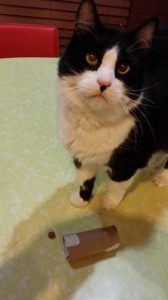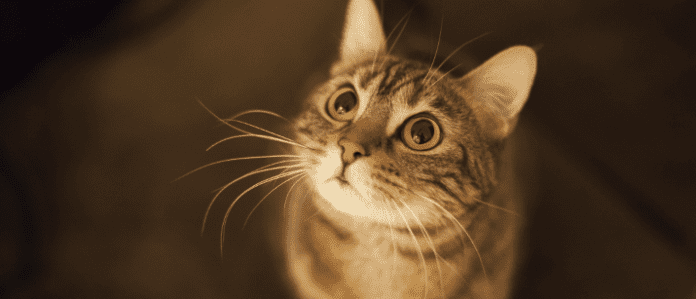If you’ve just been told that your cat needs to lose weight, you’re probably wondering how you’re going to break the traumatic news to your feline friend.
Cats often fall into two distinct categories when it comes to eating, those that simply graze on their food, but never really over-eat, and those that can’t get enough and always seem to be hungry. Even an extra 0.5-1 kilogram of weight can cause significant health problems (such as diabetes) and will shorten your beloved pet’s lifespan. A useful way to think about it, is that an average cat carrying an extra 1kg of weight is equivalent to a human carrying an extra 15kg of body weight.
So, we know it’s important, but how do we make it happen? Sometimes we need to be a little sneak, to avoid the trauma associated with dieting: from a constantly hungry cat bothering you for food at 3am to a cat who just doesn’t understand why all of a sudden there isn’t food available on demand.
We have put together a list of simple ideas. Hopefully they help to get those kilos off with minimal distress.
- To work out how many calories your cat needs, simply multiply his weight in kg by 30, then add 70, eg. 6kg x 30 +70 = 250, then multiply this by 0.8 = 200 calories per day. If your cat eats less than this amount, he will lose weight. If he eats more than this, he will gain weight. You can find out the caloric value of the food on the packet or on the manufacturers website. Simply reduce the amount of calories you feed your pet by 15% for slow, steady weight loss.
- Put some or all of your cat’s dry food in a treat ball or dispenser like the Kong Wobbler. It will slow down his eating as well as increasing his exercise. You can easily make one at home with an old toilet-roll holder partially sealed at either end with tape.

My Jimmy with a home-made food dispenser I made - Allow your cat to ‘hunt’ his food by hiding it around the house or scattering dry food on the floor.
- Add more water to your cat’s food. This will help to keep him hydrated, as well as filling him up. You can do this with wet or dry food.
- Feed your cat frequent small meals, most cats prefer to eat at least 7 times per day, so splitting the meals will help to increase satiety.
- Reduce the dry food, this is usually where the calories are. Canned food is usually around 80% water, while dry food is less than 5% water and is basically a calorie-dense, dehydrated food. Even just a few extra biscuits add significant extra calories. For example many dry foods contain 400 calories per cup, while the average cat requires less than 200 calories per day.
- Play with your cat for at least 10 minutes per day. Use a laser pointer or fishing-line toy that encourages your cat to jump, pounce and dart about. Exercise that predator-play instinct.
- Consider an automatic feeder if your cat is constantly asking you for food. This will allow you to give him affection when he asks for it, rather than just food and also have the added benefit of allowing you to measure out 6 small meals spread throughout the day and save you from being woken by a paw to the face at 3am.
- Think about high protein foods such as meat that you can feed your cat. Aim for lean human-grade meats like kangaroo and avoid mince or pet meats (which contain dangerous sulphur preservatives). A pure meat diet is not balanced on its own, but makes a great addition to your pet’s diet and is great for the teeth. It is also better metabolically for your cat than high carbohydrate, fatty dry foods. A raw chicken neck is also great for your cat’s teeth and will last much longer than the equivalent amount of dry food.
- If your cat is a dry food fiend, consider one of the weight loss or diet pet foods available out there. They are usually higher in fibre and protein. Ideally purchase the best food you can afford (ie. from a vet or pet shop rather than the supermarket) and also consider adding some fresh meat or moisture from canned food to increase protein and water intake.









